1. What is a form object?
Form (
3. Properties of the form objectAttribute description
encoding Default is text/htmlmethod "Get" or " Post”
elements
Array
Read-only, the index of all objects in the form, 0,1,…
You can know how many objects the form has by document.formname.elements.length
Here the elements attribute is a An array whose elements correspond to controls within the form on the page. In addition to elements, several other attributes of the form correspond to the attributes of the
mark in HTML syntax. 4. Examples of using form objects If you use the form object in the following example, the effect and code are as follows: <script> <p>function display(){ <p>var str; <p>// 使用表单名称访问表单对象的属性 <p>str="name="+document.form1.name+"\r"; <p>str=str+"action="+document.form1.action+"\r"; <p>str=str+"method="+document.form1.method+"\r"; <p>//访问表单对象的elements数组 <p>str=str+"elements:"+"\r"; <p>for(var i=0;i<document.form1.elements.length;i++){ <p>str=str+ " "+document.form1.elements[i].type <p>+"\t"+document.form1.elements[i].name <p>+"\t"+document.form1.elements[i].value+"\r"; <p>} <p>window.alert(str); <p>return false; <p>} <p>function submitform(){ <p>//使用表单数组+下标访问表单对象 <p>document.forms[0].submit(); <p>} <p></script> alt Sets or returns the alternative text that is displayed when the browser does not support text fields. defaultValue Sets or returns the default value of the text field. disabled Sets or returns whether the text field should be disabled. id Sets or returns the id of the text field. maxLength Sets or returns the maximum number of characters in the text field. name Sets or returns the name of the text field. readOnly Sets or returns whether the text field should be read-only. size Sets or returns the size of the text field. tabIndex sets or returns the tab key control order of the text field.type Returns the form element type of the text field.
value 设置或返回文本域的 value 属性的值。
方法blur( ) 将当前焦点移到后台
select( ) 加亮文字,选取文本域中的内容。
focus() 在文本域上设置焦点。
主要事件onfocus,onblur,onselect,onchange
text对象使用示例如下:
<script> </script>
document.form1.text1.value="this is a javascirpt";
document.form1.text1.select();
alert(document.form1.text1.value);
document.text1.blur();
2、textarea对象
textarea对象对应于页面中的textarea输入控件。
属性name textarea输入框控件名称
value textarea输入框控件中当前的文本
defaultvalue textarea输入框控件的默认文本
方法blur( ) 将当前焦点移到后台
select( ) 加亮文字
主要事件onfocus,onblur,onselect,onchange
3、select对象
select对象对应于网页中的下拉列表框。
…………
属性disabled 设置或返回是否应禁用下拉列表
id 设置或返回下拉列表的 id。
length 返回下拉列表中的选项数目。
multiple 设置或返回是否选择多个项目。
name 设置或返回下拉列表的名称。
options
数组
返回包含下拉列表中的所有选项(option对象)的一个数组。
其中option对象包括如下属性:
text 该选项显示的文字
value 该选项的value值
selected 指明该选项是否别选中
selectedIndex 当前选中项的下标
size 设置或返回下拉列表中的可见行数。
方法options.add() 向下拉列表添加一个选项。
blur() 从下拉列表移开焦点。
focus() 在下拉列表上设置焦点。
remove() 从下拉列表中删除一个选项。
主要事件onfocus,onblur,onchange
4、button对象
button对象对应于网页中的按钮控件。
属性accessKey 设置或返回访问按钮的快捷键。
alt 设置或返回当浏览器无法显示按钮时供显示的替代文本。
disabled 设置或返回是否禁用按钮。
id 设置或返回按钮的 id。
name 设置或返回按钮的名称。
tabIndex 设置或返回按钮的 tab 键控制次序。
value 设置或返回在按钮上显示的文本。
方法blur() 把焦点从元素上移开。
click() 在该按钮上模拟一次鼠标单击。
focus() 为该按钮赋予焦点。
主要事件onclick
5、checkbox对象
checkbox对象对应于网页中的复选框。
选项说明
属性accessKey 设置或返回访问 checkbox 的快捷键。
alt 设置或返回不支持 checkbox 时显示的替代文本。
checked 设置或返回 checkbox 是否应被选中。
defaultChecked 返回 checked 属性的默认值。
disabled 设置或返回 checkbox 是否应被禁用。
id 设置或返回 checkbox 的 id。
name 设置或返回 checkbox 的名称。
tabIndex 设置或返回 checkbox 的 tab 键控制次序。
value 设置或返回 checkbox 的 value 属性的值
方法blur() 从 checkbox 上移开焦点
click() simulates a mouse click in the checkbox.
focus() gives focus to checkbox.
Main event onclick
6. Radio object
The radio object corresponds to the radio control in the web page. When there are multiple radio controls with the same name in the web page, an array of
radio objects is formed, in which each radio control is a radio object.
Option Description
Option Description
…………
Attribute accessKey Sets or returns the shortcut key for accessing the radio button.
alt Sets or returns the alternative text displayed when the radio button is not supported.
checked Sets or returns the status of the radio button.
defaultChecked Returns the default state of the radio button.
disabled Sets or returns whether the radio button is disabled.
id Sets or returns the id of the radio button.
name Sets or returns the name of the radio button.
tabIndex sets or returns the tab key control order of radio buttons.
value Sets or returns the value of the radio button’s value attribute.
Method blur() removes focus from radio button.
click() simulates a mouse click on a radio button.
focus() gives focus to the radio button.
Main event onclick
7. hidden object
The hidden object corresponds to the hidden domain in the web page.
Attribute alt Sets or returns the alternative text displayed when hidden input fields are not supported.
id Sets or returns the id of the hidden domain.
name Sets or returns the name of the hidden domain.
value sets or returns the value of the value attribute of the hidden field.
8. Submit object
The submit object corresponds to the submit button in the web page.
Attribute accessKey Sets or returns the shortcut key to access the submit button.
alt Sets or returns the alternative text to be displayed when the browser does not support the submit button.
disabled Sets or returns whether the submit button should be disabled.
id Sets or returns the id of the submit button.
name Sets or returns the name of the submit button.
tabIndex sets or returns the tab key control order of the submit button.
value Sets or returns the text displayed on the submit button.
Method blur() removes focus from the submit button.
click() simulates a mouse click on the submit button.
focus() gives focus to the submit button.
Main event onclick
9. Password object
The password object corresponds to the password input box in the web page.
Attribute accessKey Sets or returns the shortcut key for accessing the password field.
alt Sets or returns the alternative text displayed when the password field is not supported.
defaultValue Sets or returns the default value of the password field.
disabled Sets or returns whether the password field should be disabled.
id Sets or returns the id of the password field.
maxLength Sets or returns the maximum number of characters in the password field.
name Sets or returns the name of the password field.
readOnly Sets or returns whether the password field should be read-only.
size Sets or returns the length of the password field.
tabIndex sets or returns the tab key control order of the password field.
value Sets or returns the value of the value attribute of the password field.
Method blur() Removes focus from the password field.
click() gives focus to the password field.
focus() Select the text in the password field.
Main events onfocus, onblur, onselect, onchange
*History object
The History object contains the URLs visited by the user (in the browser window).
The History object is part of the window object and can be accessed through the window.history property.
History Object Properties
Property Description
length returns the number of URLs in the browser history list.
History Object Method
Method Description
back() Loads the previous URL in the history list.
forward() loads the next URL in the history list.
go(number|URL) loads a specific page in the history list.
-1 means the previous page
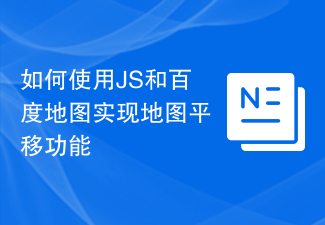 如何使用JS和百度地图实现地图平移功能Nov 21, 2023 am 10:00 AM
如何使用JS和百度地图实现地图平移功能Nov 21, 2023 am 10:00 AM如何使用JS和百度地图实现地图平移功能百度地图是一款广泛使用的地图服务平台,在Web开发中经常用于展示地理信息、定位等功能。本文将介绍如何使用JS和百度地图API实现地图平移功能,并提供具体的代码示例。一、准备工作使用百度地图API前,首先需要在百度地图开放平台(http://lbsyun.baidu.com/)上申请一个开发者账号,并创建一个应用。创建完成
 js字符串转数组Aug 03, 2023 pm 01:34 PM
js字符串转数组Aug 03, 2023 pm 01:34 PMjs字符串转数组的方法:1、使用“split()”方法,可以根据指定的分隔符将字符串分割成数组元素;2、使用“Array.from()”方法,可以将可迭代对象或类数组对象转换成真正的数组;3、使用for循环遍历,将每个字符依次添加到数组中;4、使用“Array.split()”方法,通过调用“Array.prototype.forEach()”将一个字符串拆分成数组的快捷方式。
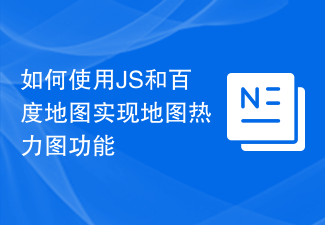 如何使用JS和百度地图实现地图热力图功能Nov 21, 2023 am 09:33 AM
如何使用JS和百度地图实现地图热力图功能Nov 21, 2023 am 09:33 AM如何使用JS和百度地图实现地图热力图功能简介:随着互联网和移动设备的迅速发展,地图成为了一种普遍的应用场景。而热力图作为一种可视化的展示方式,能够帮助我们更直观地了解数据的分布情况。本文将介绍如何使用JS和百度地图API来实现地图热力图的功能,并提供具体的代码示例。准备工作:在开始之前,你需要准备以下事项:一个百度开发者账号,并创建一个应用,获取到相应的AP
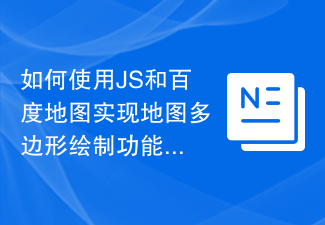 如何使用JS和百度地图实现地图多边形绘制功能Nov 21, 2023 am 10:53 AM
如何使用JS和百度地图实现地图多边形绘制功能Nov 21, 2023 am 10:53 AM如何使用JS和百度地图实现地图多边形绘制功能在现代网页开发中,地图应用已经成为常见的功能之一。而地图上绘制多边形,可以帮助我们将特定区域进行标记,方便用户进行查看和分析。本文将介绍如何使用JS和百度地图API实现地图多边形绘制功能,并提供具体的代码示例。首先,我们需要引入百度地图API。可以利用以下代码在HTML文件中导入百度地图API的JavaScript
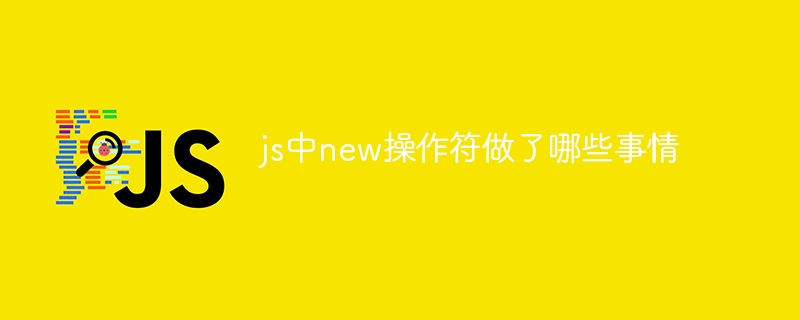 js中new操作符做了哪些事情Nov 13, 2023 pm 04:05 PM
js中new操作符做了哪些事情Nov 13, 2023 pm 04:05 PMjs中new操作符做了:1、创建一个空对象,这个新对象将成为函数的实例;2、将新对象的原型链接到构造函数的原型对象,这样新对象就可以访问构造函数原型对象中定义的属性和方法;3、将构造函数的作用域赋给新对象,这样新对象就可以通过this关键字来引用构造函数中的属性和方法;4、执行构造函数中的代码,构造函数中的代码将用于初始化新对象的属性和方法;5、如果构造函数中没有返回等等。
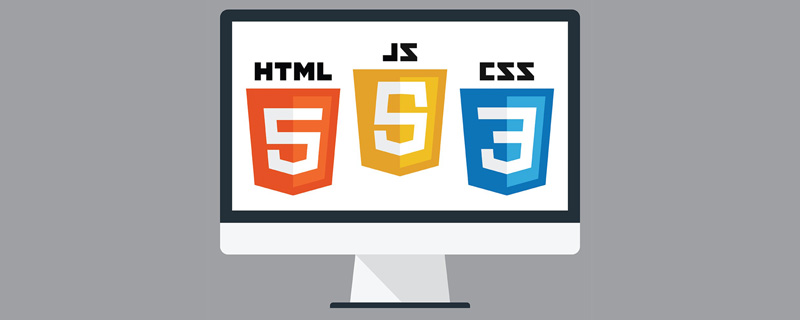 用JavaScript模拟实现打字小游戏!Aug 07, 2022 am 10:34 AM
用JavaScript模拟实现打字小游戏!Aug 07, 2022 am 10:34 AM这篇文章主要为大家详细介绍了js实现打字小游戏,文中示例代码介绍的非常详细,具有一定的参考价值,感兴趣的小伙伴们可以参考一下。
 php可以读js内部的数组吗Jul 12, 2023 pm 03:41 PM
php可以读js内部的数组吗Jul 12, 2023 pm 03:41 PMphp在特定情况下可以读js内部的数组。其方法是:1、在JavaScript中,创建一个包含需要传递给PHP的数组的变量;2、使用Ajax技术将该数组发送给PHP脚本。可以使用原生的JavaScript代码或者使用基于Ajax的JavaScript库如jQuery等;3、在PHP脚本中,接收传递过来的数组数据,并进行相应的处理即可。
 js是什么编程语言?May 05, 2019 am 10:22 AM
js是什么编程语言?May 05, 2019 am 10:22 AMjs全称JavaScript,是一种具有函数优先的轻量级,直译式、解释型或即时编译型的高级编程语言,是一种属于网络的高级脚本语言;JavaScript基于原型编程、多范式的动态脚本语言,并且支持面向对象、命令式和声明式,如函数式编程。


Hot AI Tools

Undresser.AI Undress
AI-powered app for creating realistic nude photos

AI Clothes Remover
Online AI tool for removing clothes from photos.

Undress AI Tool
Undress images for free

Clothoff.io
AI clothes remover

AI Hentai Generator
Generate AI Hentai for free.

Hot Article

Hot Tools

ZendStudio 13.5.1 Mac
Powerful PHP integrated development environment

Safe Exam Browser
Safe Exam Browser is a secure browser environment for taking online exams securely. This software turns any computer into a secure workstation. It controls access to any utility and prevents students from using unauthorized resources.

DVWA
Damn Vulnerable Web App (DVWA) is a PHP/MySQL web application that is very vulnerable. Its main goals are to be an aid for security professionals to test their skills and tools in a legal environment, to help web developers better understand the process of securing web applications, and to help teachers/students teach/learn in a classroom environment Web application security. The goal of DVWA is to practice some of the most common web vulnerabilities through a simple and straightforward interface, with varying degrees of difficulty. Please note that this software

SublimeText3 English version
Recommended: Win version, supports code prompts!

VSCode Windows 64-bit Download
A free and powerful IDE editor launched by Microsoft






